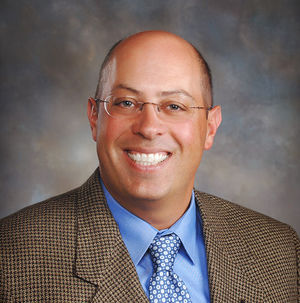
John Anella was jubilant in early June after voters passed a referendum that will infuse $220 million for capital and operating expenses into the South Bend Community School Corporation budget over the next eight years.
“I might be the happiest person on earth right now,” Anella said the morning after the votes were tallied.
Indiana passed a cap on property taxes in 2008 that has cost South Bend schools more than $60 million in funding, a financial strain the referendum was intended to mitigate. As school board president, Anella has been at the forefront of efforts to institute cost-saving measures while investing in the academic achievement of a student population drawn from disproportionately disadvantaged circumstances. That means allocating resources beyond the classroom — such as providing meals for students even when school’s not in session and supplying internet access to underserved neighborhoods.
Anella discussed the school corporation’s challenges and the initiatives administrators have implemented to help South Bend students succeed.
What does the passage of the referendum mean for the future?
It is a great victory for the students of South Bend and the community as a whole. Keeping in mind that we have absorbed tens of millions [of dollars] in revenue loss, this keeps our head above water and allows the space to create real positive change for our district. The success of this referendum will help us to increase literacy and graduation rates, be a truly equitable and inclusive urban school district and put our financial situation on a sustainable long-term trajectory.
What percentage of South Bend public school students live in poverty? How do schools address the challenges of educating young people facing socioeconomic disadvantages?
Nearly 70 percent of our students qualify for free and reduced lunch. Numerous metrics can be used to quantify poverty in our student population, but it is significant — more than double and nearly triple the state and national average. We have addressed these issues in many ways, including providing every student a computer to use in and out of the classroom. We park 20 Wi-Fi-equipped school buses in areas of the city that have limited internet access. We have improved our food service provider and focused on making sure our students are being fed whether they’re in or out of school. During the pandemic, we have provided over 600,000 meals even while students weren’t in school. We have a strong English learner program for our large and growing Hispanic population. We have partnered with numerous local social-service agencies to provide socio-emotional services, literacy and after-school activities.
Which metrics provide the most accurate measures of school quality?
The most commonly used metric is the state accountability grade, which can be an overly simplistic measure that doesn’t grasp the complexities facing an urban school district. Numerous other metrics are used to score math, English and reading proficiency. No matter what is used, there needs to be improvement in overall academic achievement in South Bend schools. The district has a C rating from the state. Many of our schools are performing well. A number of our schools struggle and the level of need in those student populations is very high. Our four high schools are a bright spot. One is rated A, one B and the other two are Cs. They all have a broad and deep range of courses and career and technical education.
The South Bend Empowerment Zone was established in lieu of a state takeover of Navarre Middle School. What led to the Empowerment Zone’s creation and what are its objectives?
Navarre had six straight Fs under the state’s accountability grading system and was subject to intervention by the state board of education. The Empowerment Zone was a compromise between the South Bend school corporation and the state, which does not have a good track record taking over schools. The creation of the Empowerment Zone — essentially a school district within a school district, with its own leader and a level of autonomy most traditional schools don’t have — created an opportunity for comprehensive solutions to the issues at Navarre as well as its four elementary feeder schools. Outside consultants have provided sorely needed educational, financial and other support. There is no guarantee of success but this bold project shows we are committed to our students first and aware that we couldn’t continue to do things the same old way.
Interview by Jason Kelly ’95, an associate editor of this magazine and, like Anella, a South Bend public school graduate.